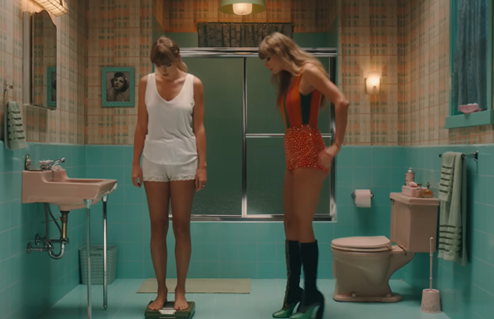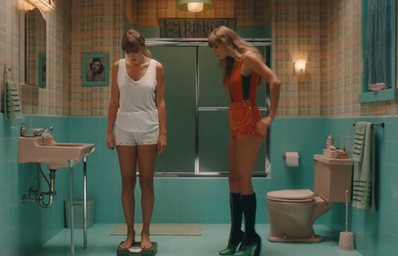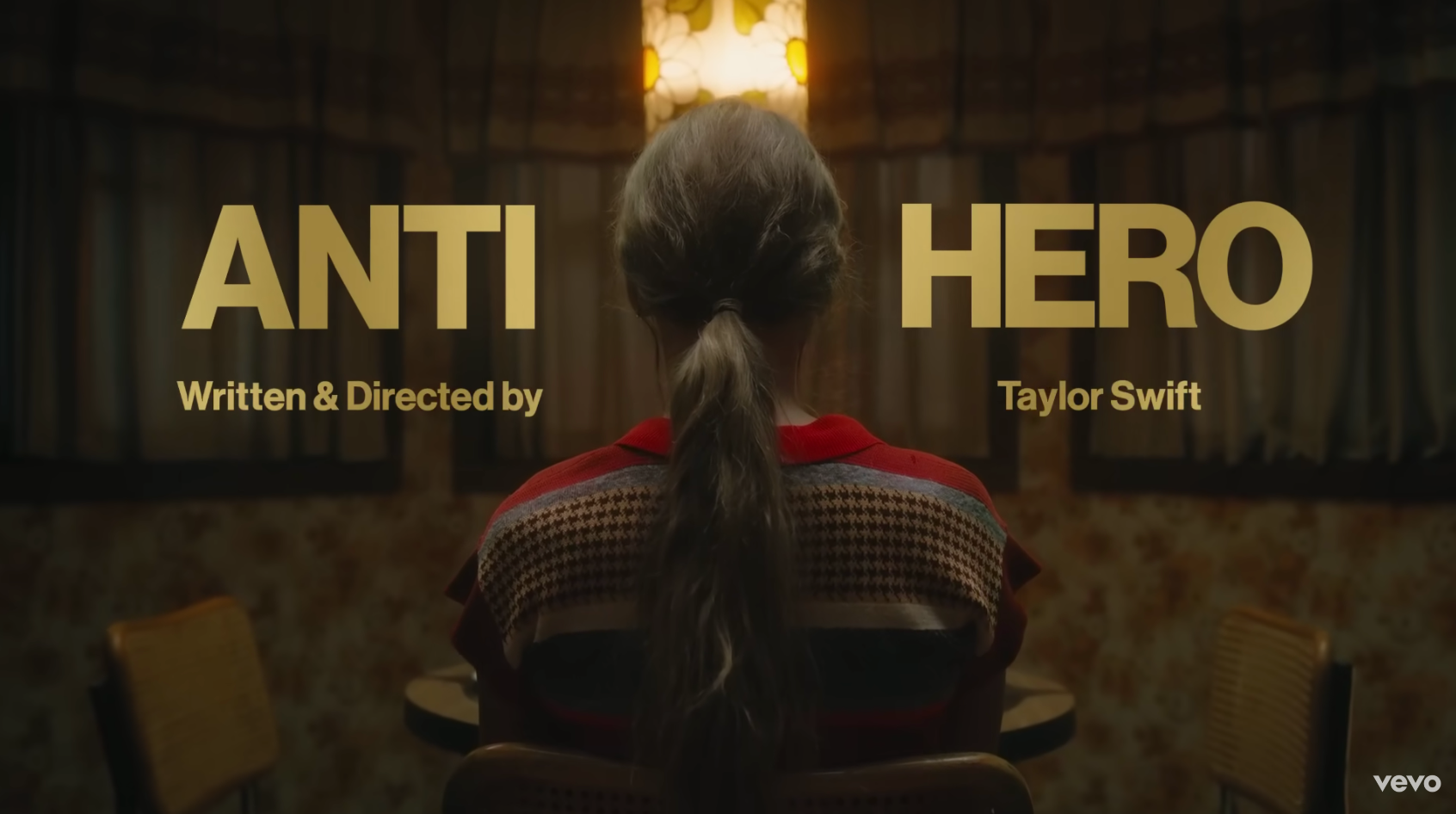On October 21st, the composer and singer Taylor Swift released her tenth studio album: Midnights, a set of 13 new songs and the unexpected release of Midnights (3am version), that includes seven additional tracks written during the recording of the album. She stated on Twitter that “Midnights is a collage of intensity, highs and lows and ebbs and flows. Life can be dark, starry, cloudy, terrifying, electrifying, hot, cold, romantic or lonely. Just like Midnights”. Therefore, her newest compositions are a dismemberment of many stages of her life, from anxiety and self doubt to falling in love and finding yourself.
The release of Midnights broke various records, becoming Spotify’s most-streamed album in a single day – causing there to be a technical problem on the platform due to the amount of users attempting to listen to it – and also making Swift the most-streamed artist in a single day in Spotify history.
Prior to the release of the album, Taylor shared a teaser trailer for the record’s forthcoming music videos, being a compilation of several scenes of the Midnights visuals. As of the moment, Swift has released the music videos for two of the tracks: Anti-Hero and Bejeweled. However, it was the Anti-Hero MV that caught most of attention, since it had many negative comments about having a fatphobic scene in it, leading it to be altered days after its release.
“Anti-Hero” Music Video
The Anti-Hero music video, directed by Taylor, was released on the same day as Midnights, being the album’s first visual representation. The singer described it as a portrait of her “nightmare scenarios and intrusive thoughts play out in real time”, having a series of scenes that show many of Swift’s insecurities, about herself and her future. The video features Taylor coming face-to-face with another version of herself – the Anti-Hero – which follows her through the entire MV and sabotages her inner thoughts.
“It’s me, hi, I’m the problem, it’s me
At tea time, everybody agrees
I’ll stare directly at the sun but never in the mirror”
Taylor Swift, “Anti-Hero”
However, one scene in particular caused commotion online when the video was released. The clip – that has now been altered – showed Taylor standing nervously on a scale that read the word “Fat”, while the anti-hero version of herself looks at her in disapproval. Later on, while Taylor seems disappointed in herself and saddened by the results of the scale, her other version seems pleased at her gloom. Taylor has now edited the video to remove the scale scene in response to the comments.
Many fans came to Taylor’s defense, explaining that the criticism towards the singer lacked context about her own personal struggles with suffering with an eating disorder, which she revealed on her Netflix documentary Miss Americana. Besides, this isn’t the first song in which the singer talks about her insecurities:
“From sprinkler splashes to fireplace ashes
I gave my blood, sweat, and tears for this
I hosted parties and starved my body”
Taylor Swift, “You’re On Your Own, Kid”
Miss Americana: Eating Disorder
Taylor Swift first addressed her battle with an eating disorder in her Netflix documentary: Miss Americana, released in 2020, which is described as a “raw and emotionally revealing look at one of the most iconic artists of our time during a transformational period in her life”. In the documentary, two phases of Swift’s career are portrayed: The composition of her album Reputation – amidst Kanye West drama – and the composition of her album Lover.
The Netflix production addresses a series of Taylor’s insecurities, such as speaking about her political views and her weight. In the documentary, there’s a montage of derogatory comments and headlines about the singer’s body, like “She’s too skinny. It bothers me”. The composer later comments that she no longer looks at paparazzi pictures of herself everyday. She stated “a picture of me where I feel like I looked like my tummy was too big or someone said that I looked pregnant… and that’ll just trigger me to just starve a little bit – just stop eating”, but now acknowledges it wasn’t a healthy mindset.
Is Taylor Swift Fatphobic?
So, was Taylor’s representation of her own battle with an eating disorder really fatphobic?
Taylor Swift was constantly slandered by media outlooks and headlines about her weight, which caused her to develop an eating disorder. In a way, she was also a victim of the media representations of what it means to have a perfect body image. The truth is, the internet has constantly based itself on fatphobia, claiming it’s not healthy or pleasent. This is a point of view that has been evolving and we are now able to call out blatant fatphobia. Fatphobia is an issue, it needs to be addressed.
Swift projected this music video and song to be a portrayal of her experience with an eating disorder and body dysmorphia, in which she was constantly labeled as fat in a negative way. Her visualization of self image comes from the weight that society puts on women and men to be in perfect shape, this being an unattainable standard of beauty. That is what causes Taylor and many others to look in the mirror and think “I’m not good enough, since I don’t fit the standard of perfection”.
The use of the word ‘fat” was not included by Taylor to negatively talk about fat people, it was a way to demonstrate her inner thoughts suffering with body dysmorphia and the constant effect of headlines. It was a way to express her feelings. However, the amount of negative reactions from the community is, in a way, understandable, since this is a reality they live everyday, and is now used again as something negative.
The singer could have used a variety of different expressions to portray her suffering, like “not good enough”. But by reducing the importance of addressing eating disorders while being a thin individual, it’s just reiterated that people see the word as negative naturally. When it clearly shouldn’t be. This was a representation of eating disorders, while Taylor’s anti-hero version could be seen as the impersonation of society’s effect on people’s brains.
A popular TikTok content creator (@thegirlwithamicrophone) – who identifies herself as a fat person – claimed that she respects the original version of the music video. She stated that: “For me, the scene (…) is commentary on Taylor’s eating disorder. But the important thing is context”. She also added “Point of view in writing, in art, makes a difference when it comes to the imagery and the messages that are portrayed. It’s pretty clear that Taylor is not saying that the way she feels when she steps on the scale is normal, good, or healthy”.
The content creator says: “So I don’t have a problem with her showing what her eating disorder sounds like to her, because it’s not her, it’s the disorder. I personally think we have to have space for the problematic sides of ourselves and others can be portrayed in art but through a point of view that makes it clear that these are not normal or healthy”.
The article above was edited by Juliana Sanches. Liked this type of content? Check out Her Campus Casper Libero for more!



